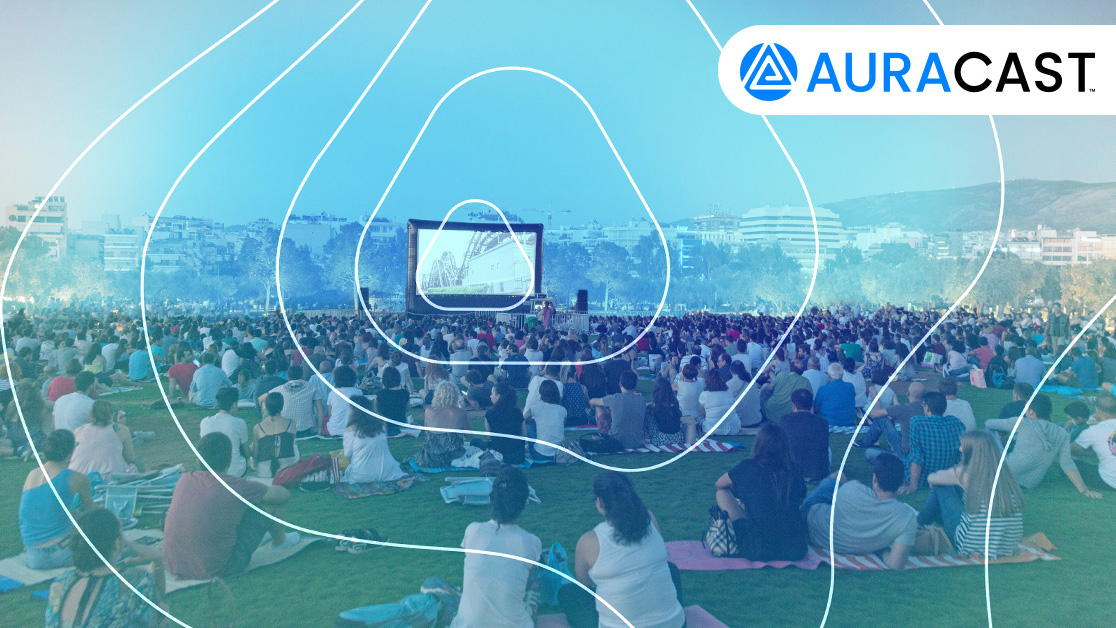
“Welcome to the year of the whores” has to be up there as one of the best real-time TV subtitle whoopsies of them all, as the BBC’s Tina Daheley ushered in the Chinese Year of the Horse in 2014. Close behind it is surely presenter Dan Walker referring to the English seaside town Cromer as famous for its “crap” (instead of crabs), and Manchester United midfielder Adnan Januzaj once being subtitled as "Janet Jazz Jazz Jam".
Just last weekend I was watching Formula 1 on a pub TV and noticed how many words the subtitles got wrong (though none to the same bemusement of those notorious blunder examples) or just plainly missed. Live subtitles provide an indispensable service for the deaf and hard of hearing, of course, and I’m not at all here to bash the efforts of hard-working captioners.
But that F1 pub experience reminded me of a new broadcast audio technology I first heard about last summer that could make experiencing audio content in public spaces much better for a lot of people.
Pub sports commentary for all (who want it)
It’s called Auracast and essentially allows a source device, like a TV or phone, to broadcast one or more audio streams to an unlimited number of audio receivers such as earbuds, speakers or hearing aids, owners of which can then choose which audio stream(s) they want their listening device to tune into. So, in a pub with numerous TVs showing different sports, each TV’s audio could be broadcast out for pub-loafers to dial their earbuds into if they like so they get the proper commentary as opposed to relying on watching imperfect subtitles.
Now, I know what you’re about to say – “how anti-social is that?” But for solo drinkers or indeed for killing time at airport bars, Auracast could be the perfect solution for a perfect situation. Honestly, even if you’re at the pub with your mates, you could just put only one earbud in on a low volume and enjoy both social banter and commentary – the best of both worlds. It could even be an excuse to block out the one mate who has had one too many pints and has decided to personify a world-class coach. Oh the potential!
And away from the pub, of course, Auracast could let you share your music library with every headphone-wearer in your train carriage, allowing fellow in-range travellers to tune into it if they so wish. Instead of the audio commentary for the Wimbledon Championships being blasted loudly through speakers in every square and green space in London, watchers could simply opt to listen via their Bluetooth headphones without any passers-by being audibly violated.
Perhaps a plane’s PA system could work similarly so that those blaring music through their headphones might not miss that all-important meal announcement. At the gym? You could replace the TV screen subtitles with audio in your headphones. You get the picture. An Auracast transmitter could supposedly be picked up within a 30,000 square-feet radius, so you can imagine its potential.
And this goes for people using hearing aids too, on a more serious note, as Auracast will be able to deliver streams directly to the ear canals via the (compatible) hearing aid, as opposed to the hearing aid processing sound from its surroundings. Indeed, one of the goals of Auracast is for it to become an “advanced, new assistive listening system”.
Expanding Bluetooth’s horizons
I’ve mentioned Bluetooth a handful of times now because, yes, Auracast is a Bluetooth feature. It’s one of the features that the Bluetooth Special Interest Group (Bluetooth SIG) – a global community of 36,000 companies responsible for setting Bluetooth technology standards – has included in its latest specifications for the relatively new Bluetooth LE (Low Energy) Audio standard (which also, by the way, introduced the LC3 codec for supposedly better quality audio at lower data rates and increased power efficiency compared to the ‘standard’ SBC Bluetooth).
It is actually a rebranded version of a feature SIG introduced much earlier – Audio Sharing – which focused more on sharing audio between source devices as opposed to broadcasting out multiple channels. The Bluetooth SIG likens the technology to how radio signal is transmitted, in that a standard radio transmitter sends out one signal that any number of in-range radio receivers can tune in to.
For a device to support Auracast, it must support Bluetooth 5.2 (as many wireless headphones from the past two years do) and the Public Broadcast Profile (PBP) spec within the new LE Audio standard. Auracast is supported by Android 13 (no word on iOS yet) and by Qualcomm’s next-gen chips that will make their way into earbuds and phones of this year and next. TVs would need Auracast support built-in too, or alternatively some sort of plug-in Auracast transmitter that is bound to show up. But actual nameable Auracast-compatible products are few and far between right now – Philips’ Fidelio L4 headphones are one example. So now we wait.
It’s a promising road for Bluetooth to be travelling down. I was – very briefly – most excited for Bluetooth’s near-future with particular regard to its potential to deliver lossless hi-res audio quality between phones and headphones, but it seems like that level of wireless audio quality for portable devices is actually in the hands of Ultra Wide Band and SCL6 technologies. Auracast, on the other hand, is very real and could genuinely open up a whole new world of audio experiences, not least for those with hearing loss.
MORE:
Bluetooth LE and the LC3 codec won't improve audio quality
aptX Lossless: what is the breakthrough Bluetooth codec? How can you get it?
It's official, the first "high-resolution" wireless headphones are coming







